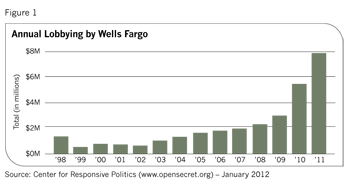While flying back from a private speaking engagement, I recently spent a couple of hours watching the 1984 Milos Forman film Amadeus. It wasn't a random Apple Genius selection.
Earlier that day I had met with a small group of elite RIAs. Over the course of our discussion, the conversation kept returning to various proposed regulatory initiatives and their potential impact on these firms. I could sense the anger and frustration mounting as we reviewed each topic. The indignation was justifiable, of course. Independent advisory firms seem to keep coming out on the short end of recent initiatives.
As I thought about our discussion on the flight home, I sat (rather uncomfortably) in search of a simple metaphor that would summarize the regulatory environment. And that's when this modern classic film popped into my head.
Along Comes Mozart
Think of the "Big 4" wirehouses as the Antonio Salieri of the investment world-competent yet fatally flawed and limited in their abilities, but nevertheless firmly entrenched. One day, however, along comes a true virtuoso: the fee-based independent investment advisor.
Initially, Salieri looks upon this upstart as nothing more than a passing nuisance. But as time passes, more and more people begin gravitating to the music of this prodigy. Even those closest to Salieri begin to defect and join forces with Mozart. For the appointed court composer who still has the king's ear, the situation has suddenly shifted from annoyance to outright crisis.

The Balance Of Power Shifts
It explains the current state of our industry and the mounting regulatory challenges that RIAs are finding themselves faced with. Simply put, success breeds envy. And when those who feel envious also have vast financial resources, it's little surprise that they arrive at a strategy to throw up competitive barriers, impediments and hurdles whenever and wherever possible.
Over the past five years alone, in the midst of difficult and turbulent markets, RIAs have seen their market share increase by more than 30% while wirehouse market share has slid by more than 16%, according to Cerulli Associates. Another stark trend is the migration of advisors from wirehouses to the RIA model. Over the same period from 2005 to 2010, the number of advisors in the RIA channel grew by 25% while their wirehouse counterparts saw a decrease of 21%, Cerulli says.
Anecdotally, some of the most successful wirehouse brokers from the most prominent firms are now peering over the fence at independence and, in some cases, jumping over. In addition, many of the RIA aggregators proliferating in recent years have boards stocked with some of the most well-known and highly regarded veterans of these Wall Street firms.
When In Doubt, Lobby, Lobby, Lobby
So how do the wirehouses and their bank/broker-dealer brethren respond to this growing sea change in the balance of power? The logical course of action would be for them to improve the value of their services, increase transparency, reduce conflicts and adopt a higher legal standard of care. Instead, they have chosen a more destructive route, using their influence and vast lobbying resources to hinder the RIA's ability to conduct business.








